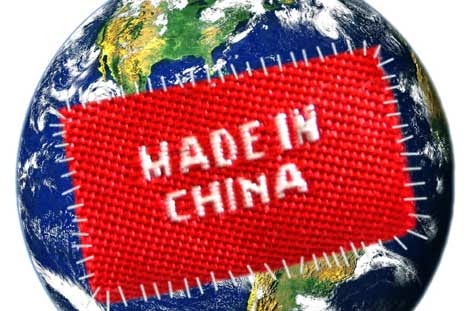U.S. family tries living without China
Lamps, birthday candles, mouse traps and flip-flops. Such is the stuff that binds the modern American family to the global economy, author Sara Bongiorni discovers during a year of boycotting anything made in China.
In "A Year Without 'Made in China,'" (Wiley, $24.95) Bongiorni tells how she and her family found that such formerly simple acts as finding new shoes, buying a birthday toy and fixing a drawer became ordeals without the Asian giant.
Bongiorni takes pains to say she does not have a protectionist agenda and, despite the occasional worry about the loss of U.S. jobs to overseas factories, she has nothing against China. Her goal was simply to make Americans aware of how deeply tied they are to the international trading system.
"I wanted our story to be a friendly, nonjudgmental look at the ways ordinary people are connected to the global economy," she said in an interview before the book appears in July.
As a business journalist in Baton Rouge, Louisiana, Bongiorni wrote about international trade for a decade. "I used to see the Commerce Department trade statistics, the billions of dollars, and think it had nothing to do with me," she said.
The reality was far different.
As the year unfolded, "the boycott made me rethink the distance between China and me. In pushing China out of our lives, I got an eye-popping view of how far China had pushed in," she wrote.
About 15 percent of the $1.7 trillion in goods the United States imported in 2006 came from China, economist Joel Naroff writes in the foreword. Much of that is the manufactured stuff that fills Wal-Mart and other retailers -- the necessities and frivolities sought by lower- and middle-income Americans.
Lower prices have been one benefit of Beijing's rise and make it very hard for consumers to forswear Chinese imports.
LEGOS, LAMPS
And hard it was.
For all of 2005, minor purchases required dogged detective work as Bongiorni scoured catalogues and read labels.
She repeatedly struck out trying to buy inexpensive shoes for her son, and even the chic local boutique that sold fancy European labels had gone out of business. So she shelled out $68 for Italian sneakers from a catalogue.
Broken appliances gathered dust because the spare parts came from China. And, with the Asian country having a near lock on the toy aisles, her 4-year-old son grew tired of taking Danish-made Legos to birthday parties as gifts.
The family resorted to snapping mouse traps when the gentler catch and release kind came from, you guessed it, China.
Bongiorni got a lesson in the global economy after products advertised as Made in USA turned out to have Chinese parts. She decided to keep a lamp with just this problem after speaking to the manufacturer and learning how China is "eating the lunch" of the few U.S lamp producers left.
Since the boycott's end, Bongiorni has chosen a middle ground. Her family seeks alternatives but accepts Chinese products when most practical. But one habit from the boycott remains: It required her to think hard about what she buys.
"Shopping became meaningful," she said.

0 comments:
Post a Comment